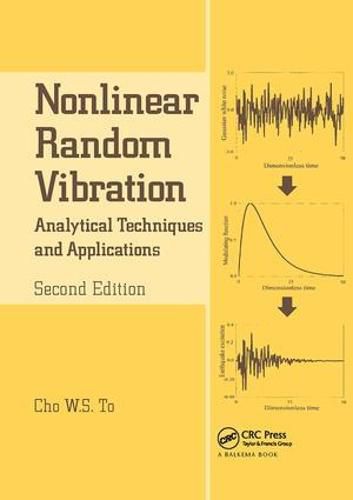Readings Newsletter
Become a Readings Member to make your shopping experience even easier.
Sign in or sign up for free!
You’re not far away from qualifying for FREE standard shipping within Australia
You’ve qualified for FREE standard shipping within Australia
The cart is loading…






This second edition of the book, Nonlinear Random Vibration: Analytical Techniques and Applications, expands on the original edition with additional detailed steps in various places in the text. It is a first systematic presentation on the subject. Its features include: * a concise treatment of Markovian and non- Markovian solutions of nonlinear stochastic differential equations, * exact solutions of Fokker-Planck-Kolmogorov equations, * methods of statistical linearization, * statistical nonlinearization techniques, * methods of stochastic averaging, * truncated hierarchy techniques, and * an appendix on probability theory.
A special feature is its incorporation of detailed steps in many examples of engineering applications.
Targeted audience: Graduates, research scientists and engineers in mechanical, aerospace, civil and environmental (earthquake, wind and transportation), automobile, naval, architectural, and mining engineering.
$9.00 standard shipping within Australia
FREE standard shipping within Australia for orders over $100.00
Express & International shipping calculated at checkout
Stock availability can be subject to change without notice. We recommend calling the shop or contacting our online team to check availability of low stock items. Please see our Shopping Online page for more details.
This second edition of the book, Nonlinear Random Vibration: Analytical Techniques and Applications, expands on the original edition with additional detailed steps in various places in the text. It is a first systematic presentation on the subject. Its features include: * a concise treatment of Markovian and non- Markovian solutions of nonlinear stochastic differential equations, * exact solutions of Fokker-Planck-Kolmogorov equations, * methods of statistical linearization, * statistical nonlinearization techniques, * methods of stochastic averaging, * truncated hierarchy techniques, and * an appendix on probability theory.
A special feature is its incorporation of detailed steps in many examples of engineering applications.
Targeted audience: Graduates, research scientists and engineers in mechanical, aerospace, civil and environmental (earthquake, wind and transportation), automobile, naval, architectural, and mining engineering.